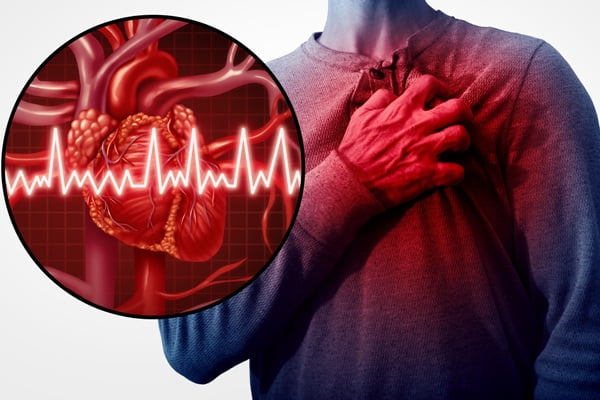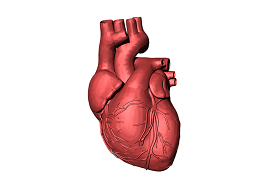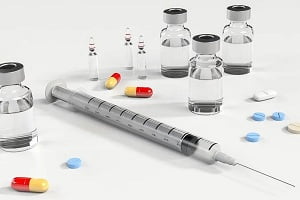Basics Understanding of Endocarditis
- Updated on: Jun 12, 2024
- 6 min Read
- Published on Jun 26, 2019


What is Endocarditis or Infective Endocarditis or Bacterial Endocarditis?
Endocarditis is a rare and potentially fatal infection of the endocardium (inner lining) of the heart. Most commonly endocarditis is caused by bacteria which enter into the blood stream and then travel to the heart, resulting in an inflammation of the inner lining of the heart. It is also called as infective endocarditis (IE) or bacterial endocarditis (BE), because the infection is mostly caused by bacterial infections. The most common type of bacterial endocarditis occurs when germs enter into the heart. Bacterial endocarditis can damage the heart valves and if left untreated, can become fatal. It is rare in healthy hearts.
There are usually two forms of infective endocarditis:
1) Acute Infective Endocarditis, which develops suddenly and may become life threatening within days
2) Subacute or Chronic Ineffective Endocarditis or subacute bacterial endocarditis, which develops slowly over a period of weeks to several months
A healthy heart is well protected against infections; however it is easier for bacteria to bypass the immune system in people who have:
- An artificial (prosthetic) heart valve
- Congenital heart disease
- Hypertrophic cardiomyopathy
- Damaged heart valves
- Habit of injecting drugs
Endocarditis or Infective endocarditis (IE) is actually an infection of the endocardial surface of the heart, and includes one or more heart valves, the mural endocardium, or a septal defect. It has many intracardiac effects like severe valvular insufficiency, which may often lead to intractable congestive heart failure and myocardial abscesses.
Endocarditis generally occurs when some bacteria, fungi or other germs from other parts of the body, like mouth, spread through the bloodstream and attack the damaged areas of heart. If not treated immediately, endocarditis can damage or destroy the heart valves and can lead to life-threatening complications. Endocarditis can be usually treated either by antibiotics or in certain cases surgery.
The exact cause of the endocarditis cannot be found however it is commonly found in people with damaged heart valves, artificial heart valves or some other heart defects. Any bacterial infection in the endocardium results in endocarditis. The infection is usually caused by streptococcal or staphylococcal bacteria and in very rare cases it can be caused by fungi or other infectious micro-organisms. Endocarditis is most commonly found in men and is twice as common in men as in women. In the United States, almost 25 percent of endocarditis cases affect people aged 60 years or above. According to few studies, it has been found that infective or bacterial endocarditis affect atleast 4 in every 100,000 people every year, and the number is still increasing.
What are the Symptoms of Endocarditis?
Endocarditis often occurs due to bacterial infection around the heart lining (endocardium). Mostly, the symptoms develop slowly over time and are not always severe. The early symptoms of bacterial endocarditis are often similar to symptoms of other illnesses and therefore remain undiagnosed in many cases.
Most of the symptoms in infective endocarditis resemble the cases of the flu or other infections like pneumonia. However, some people experience severe symptoms which appear suddenly. These symptoms are usually due to inflammation or the associated damage it causes. Some of the common symptoms of bacterial endocarditis include:
- Heart murmurs (abnormal heart sound of turbulent blood flow through the heart)
- Pale skin
- Fever or chills
- Night sweats
- Pain in the muscles or joints
- Nausea
- Decreased appetite
- A full feeling in the upper left part of your abdomen
- Weight loss
- Swelling in the feet, legs, or abdomen
- Cough
- Shortness of breath
- Presence of blood in the urine
- Splenomegaly
- Changes in the skin may also occur like red or purple spots below the skin of fingers or toes
- Red or purple spots in the whites of the eyes, inside the cheeks, on the roof of the mouth, or on the chest. These spots are formed from blood cells that are leaked out of ruptured capillary vessels.
The signs and symptoms of infectious endocarditis or bacterial endocarditis differ from person to person. They can also change over time, and depend on the cause of the infection, heart health, and how long the infection has been present.
What Causes Bacterial Endocarditis?
There are many types of bacteria which normally live on and in the body. Most of these bacteria live in the mouth, respiratory system, on the skin, and in the digestive tract. Sometimes, these bacteria enter into the bloodstream due to breakage in the skin or tissues after a medical or dental procedure. From the bloodstream, these bacteria can travel towards the heart and can settle on the heart lining or on the heart valves and therefore result in the infective endocarditis.
Although all types of bacteria cannot cause this kind of infection, but many types can. Mostly, two kinds of bacteria have been found to cause bacterial endocarditis in most cases and these are staphylococci (staph) and streptococci (strep).
People with heart valve problems are at an increased risk for bacterial endocarditis because the heart valves are an easier place for the bacteria to take hold and grow. Endocarditis is rarely found in people with normal healthy heart.
The bacterial endocarditis is commonly found in people who:
- Have undergone a heart valve surgery using an artificial valve
- Suffer from damage to the heart valves
- Have congenital heart diseases
- Have been diagnosed with hypertrophic cardiomyopathy
- Are intravenous drug users
- Have poor dental hygiene due to which the bacteria can enter the bloodstream
People with existing heart conditions resulting from infection or heart diseases should also be monitored as their immune systems are vulnerable to bacteria.
Risk Factors for Endocarditis
Mostly, people are at a higher risk of developing endocarditis if they:
- Have an existing heart condition or disease
- Have had a heart replacement surgery or received an artificial heart valve
- Have had a disease, such as rheumatic fever, which damages the heart valve
- Have received a pacemaker
- Have received intravenous drugs regularly
- Are convalescing after some serious bacterial illnesses such as meningitis or pneumonia
- Have a suppressed immune system because of diabetes, HIV, cancer or if they are receiving chemotherapy
What are the Complications Associated With Endocarditis?
Bacterial or Infective endocarditis can often result in several complications. Some of these include an abnormal heart rhythm, such as atrial fibrillation, blood clots, other organ injury, and hyperbilirubinemia with jaundice. Blood infected with bacteria can also cause emboli or clots which can travel to other parts of the body. Bacterial endocarditis often affects other organs of the body and therefore results in several serious complications. Some of the organs involved in infective endocarditis are:
- Kidneys: Due to endocarditis, kidneys often become inflamed, causing a condition called as glomerulonephritis
- Lungs
- Brain
- Bones, particularly the spinal column, which may become infected, causing osteomyelitis
- Bacteria or fungi circulate from the heart and affect these areas. These germs sometimes cause abscesses to develop in these organs or other parts of your body. Besides, endocarditis may result in some serious complications like stroke and heart failure.
How is Bacterial Endocarditis Diagnosed?
Although, it is very difficult to diagnose infective endocarditis initially because its symptoms mostly resemble other illnesses, however, following tests can help in a proper diagnosis of the condition:
ECG
Echocardiogram helps to view the valves and blood flow through the heart.
Transesophageal Echocardiogram
It is useful for a more detailed view of the heart from the esophagus.
Blood tests and Cultures Tests
These tests help to check for bacteria and any signs of inflammation.
Electrocardiography (ECG)
ECG helps in analyzing the heart rhythm.
Chest X-ray
Helps in examining the lungs.
Cardiac CT
It provides detailed information about the heart, if required.
Urine tests
Are used to check for kidney damage.
MRI
MRI of the brain is performed to check for any damage to the brain.
Treatment of Infective Endocarditis
In most of the cases, endocarditis is successfully treated with antibiotics. However, sometimes a surgery may be required to fix the damaged heart valves and to clean up any remaining signs of the infection.
Antibiotics
Patients with bacterial endocarditis are often recommended to perform blood culture tests which help in identifying the bacteria responsible for the infection. Based on the results of the blood tests, a doctor suggests the most appropriate intravenous doses of antibiotics or combination of antibiotics to fight the infection. The antibiotics are given intravenously for several weeks to clear the infection.
While taking the antibiotics, it’s important to inform the doctor about any signs or symptoms that may mean the infection is getting worse, such as:
- Fever
- Chills
- Headaches
- Joint pain
- Shortness of breath
Also, if a person develops diarrhea, a rash, itching or joint pain after taking the IV antibiotics, the doctor should be informed as soon as possible because these signs and symptoms may indicate an allergic reaction to the prescribed antibiotics.
Also, if any symptoms of shortness of breath or swelling in the legs, ankles or feet occur after the antibiotic treatment, the doctor should be immediately consulted because these symptoms may indicate heart failure.
Surgery
If the infection has damaged the heart valves and the patient has symptoms and complications for years after treatment, a surgery may be required to treat the persistent infections or to replace a damaged valve. Surgery is also sometimes needed to treat endocarditis caused by fungal infections. Depending on the condition of the disease, the doctor may recommend either repairing the damaged valve or replacing it with an artificial valve made of pig, cow or human heart tissue (biological tissue valve) or some man-made materials (mechanical valve).
Prevention of Bacterial Endocarditis
Keeping a good oral hygiene can help lower the risk of bacteria building up in the mouth and getting into the bloodstream. This reduces the risk of developing endocarditis from an oral infection or injury. If a person has undergone a dental treatment followed up with antibiotics, he should make sure to take the antibiotics as directed. People having a history of congenital heart disease, a heart surgery, or endocarditis, should keep an eye for the signs and symptoms of endocarditis. Special attention should be given to persistent fever and unexplained fatigue and if any such symptoms are found, the doctor should be contacted as soon as possible. People should avoid all those procedures which may allow the germs to enter the blood stream like body piercings, tattoos, intravenous drug use etc.











